Share your Flows with Office 365 Groups and SharePoint Lists, Connector Updates, and Analytics with Error Details
This week, we’re pleased to announce a host of new updates in Microsoft Flow from new sharing capabilities, major connector updates, and error analytics. Let us know what you think via the comments below and through our Community forums.
Share your flows with Office 365 Groups and SharePoint lists
Currently Flow enables you to share flows with your colleagues either by adding them as co-owners or (for manual flows only) run-only users. As co-owners, they have full edit permissions for the flow. As run-only users of manual flows, they can only run the flow. Till date, you could only add other individuals in your tenant or security groups. Today, we are enhancing these capabilities by allowing you to share all flows with Office 365 Groups and for those flows that feature SharePoint triggers and actions with the referenced list or library.
Share with Office 365 Groups
Suppose you have a flow that you want to share with an Office 365 Group called CRONUS Energy. From the Flow details screen, you can choose to “Add another owner” and simply enter the name or email address of the O365 Group. All members will be added as co-owners to the flow and can find it listed under Team flows. You can also add Office 365 Groups as run-only users to button flows.
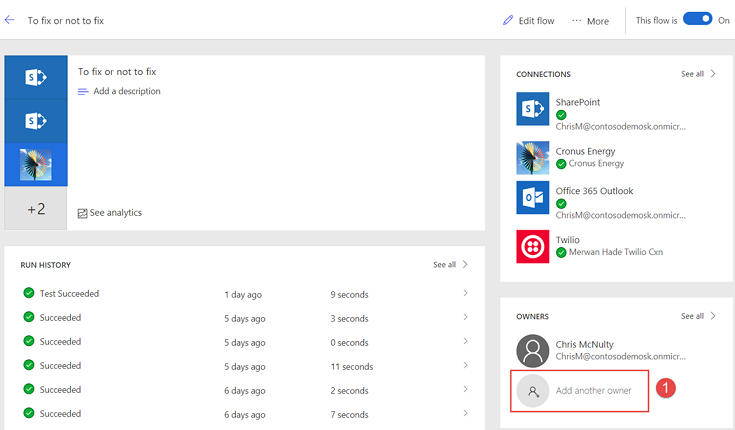
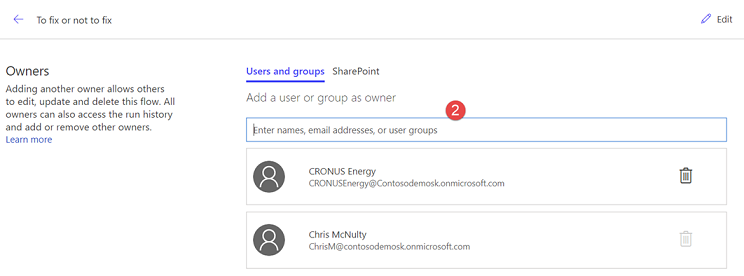

Add a list as a co-owner
Let’s suppose you have a flow that runs when an item is created or modified in a SharePoint list – say Turbine Energy Distribution, this flow also does a Get item from another list called Turbines. You can add both lists as co-owners to the flow so that everyone who has edit access to the list automatically gets edit access to the flow. Once the flow has been shared, you can simply distribute a link to it.
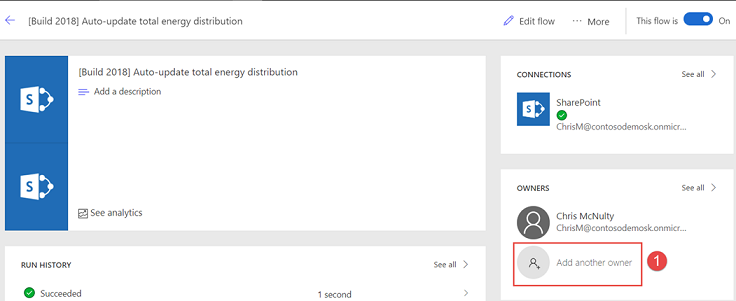
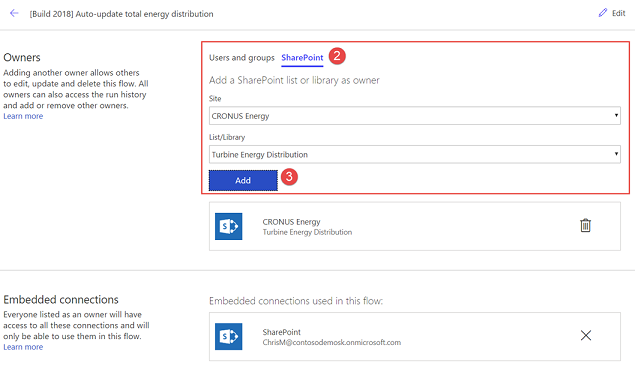
Add a list as run-only user
Similarly, let’s suppose you have a flow that sends out a document for approval and it references the Documents library. From the Flow details screen, you can add the Site and corresponding Documents library as a run-only user, so that now all users that have read/write access to the Document library automatically have permissions to run the flow from the Flow menu in SharePoint.
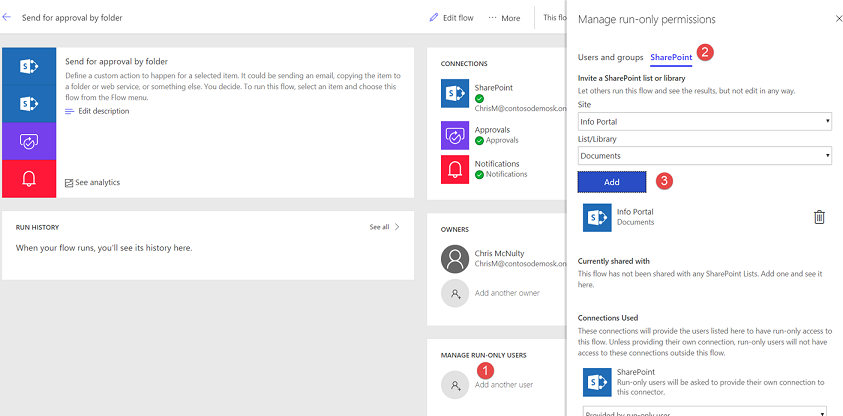
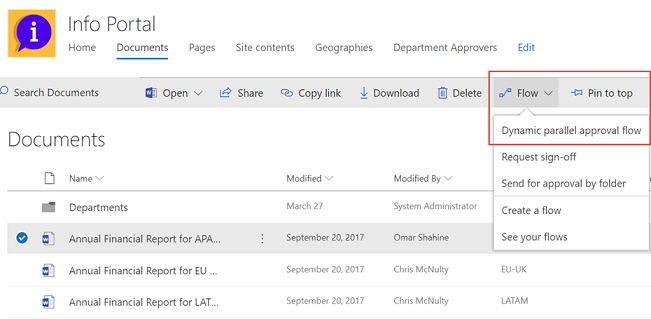
SharePoint connector updates
As Flow is the successor to SharePoint Designer workflows, we continuously strive to improve our SharePoint connector capabilities. This week, we’ve added two new capabilities – triggers for When an item or file is deleted and an action to Send an HTTP request to SharePoint.
The new action helps advanced users that are familiar with the SharePoint REST APIs to build queries and get results from SharePoint, especially if existing actions don’t currently support what you need or for scenarios where no action is available. For example, you can use this action to filter items using lookup fields or for controlling permissions to an individual item.

Two new connectors
Last week we also released two new connectors in Microsoft Flow:
- Azure Data Factory – Azure Data Factory is a hybrid data integration service that allows you to create, schedule and orchestrate your ETL/ELT workflows at scale wherever your data lives, in cloud or self-hosted network.
- MailParser – Extract data from emails & automate your workflow with our powerful email parser software. Convert emails to Excel, parse leads from emails, and more.
Microsoft Flow Analytics now includes Error Details
In December, we announced Microsoft Flow Analytics where we provided flow makers with the ability to visualize their run history. Starting today, we are rolling out updates to our maker analytics experience to include Error Details. These analytics will help users quickly identify the source and magnitude of errors they may be encountering and aid in the prompt resolution of these errors.
In this release of Microsoft Flow Analytics, we are providing the ability to view:
- Number of errors by day
- Distribution of errors by type
- Error details table
Users can access Microsoft Flow Analytics by clicking on See analytics link from a flow’s main page.
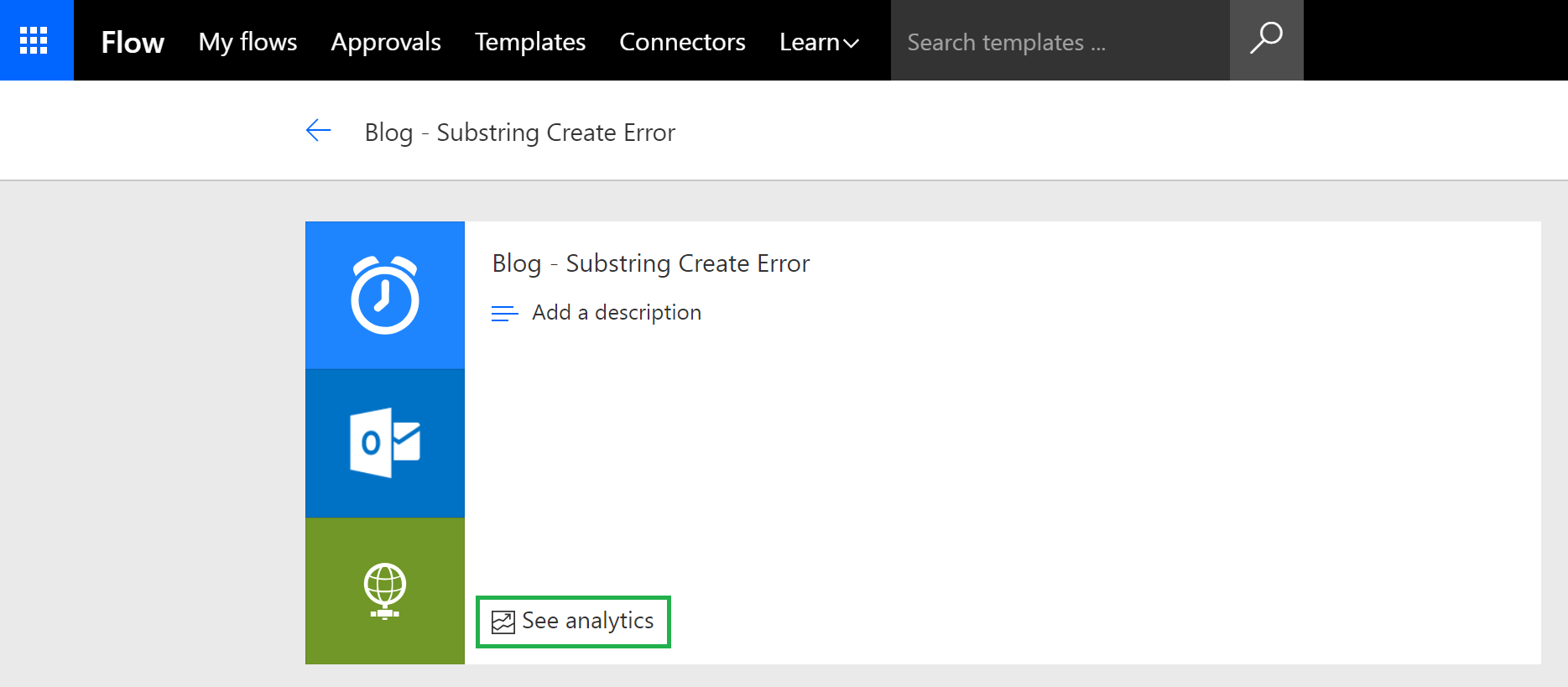
Once in the analytics experience, users can click on the Errors tab to see the error details. From there, a user can filter data based upon a selected Date Range, Action(s), Trigger or Error Type(s). In addition to filtering, a user can navigate to the last occurrence of a specific error, by clicking on the hyperlink icon. After clicking on this link, a user will be re-directed to that specific run instance for further debugging.
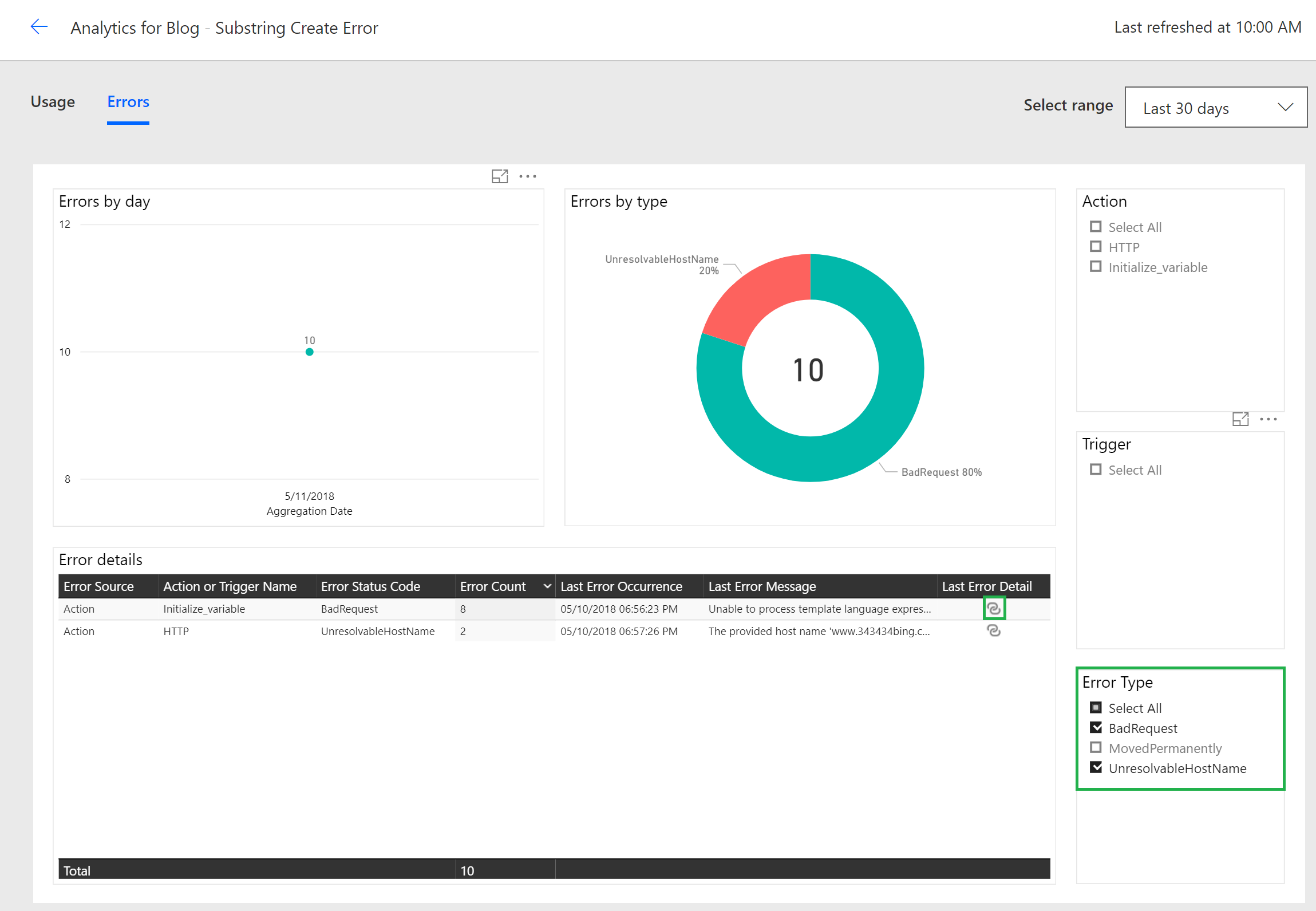
Note: It may take up to 1.5 hours for run-time data to be loaded into our analytics experience. If instant run execution data is required, please see run details for a specific flow.
If you discover a discrepancy between the number of errors on your Usage tab compared to your Errors tab, there may be a valid reason for this including:
- If a trigger fails, you will not see it count as part of your usage as it does not represent a flow that has been successfully initiated. But, technically it is an error, so we will report it on our Errors tab.
- A flow may have multiple errors that exist within a single flow execution. For example, you may have a loop that contains multiple action(s) that have failed as part of that run instance.
- Within a flow, a maker can Configure run after settings, which allows a flow to continue executing when an action has failed.
Accessing Microsoft Flow Analytics requires a Flow Plan 2 license. If you do not see the See analytics link, appearing in the maker portal, that means that you do not meet the minimum licensing requirements. For more details about Flow licensing, including signing up for a free Flow Plan 2 trial license, please visit our licensing page.


